Yellowstone National Park, primarily in Wyoming with parts in Montana and Idaho, was established on March 1, 1872, by President Ulysses S. Grant, making it the first national park in the US and widely considered the world's first. Renowned for its diverse wildlife and geothermal activity, the park's iconic Old Faithful geyser attracts many visitors. The subalpine forest is the dominant biome within the park, which falls within the South Central Rockies forests ecoregion.
1900: The Lacey Act Provides Legal Support
In 1900, the Lacey Act provided legal support for officials prosecuting poachers in Yellowstone National Park.
1901: Chicago, Burlington & Quincy Railroad Connection Opens
In 1901, a Chicago, Burlington & Quincy connection opened via Cody, enhancing rail access to Yellowstone National Park.
1902: Rail Line Extended to Gardiner Station
In 1902, the Northern Pacific Railroad spur line was extended to Gardiner station, where passengers then switched to stagecoach for further travel into Yellowstone.
1902: Bison Population Decline
In 1902, the bison population in Yellowstone Park had decreased to less than 50 individuals, marking a low point for the species.
1903: Construction of Old Faithful Inn
The Old Faithful Inn construction started in 1903.
1904: Construction of Old Faithful Inn
The Old Faithful Inn construction finished in 1904.
1908: Union Pacific Railroad Connection to West Yellowstone
In 1908, a Union Pacific Railroad connection to West Yellowstone was established, providing additional rail access for visitors.
1910: Visitor Interaction with Black Bears
Starting in 1910, black bears became a park symbol in Yellowstone due to visitor interaction with the bears.
1914: Funds for Animal Extermination
Starting in 1914, the U.S. Congress appropriated funds for "destroying wolves, prairie dogs, and other animals injurious to agriculture and animal husbandry" on public lands, including Yellowstone.
1915: Automobiles Enter Yellowstone, Horse Travel Prohibited
By 1915, 1,000 automobiles per year were entering Yellowstone National Park, leading to conflicts with horse-drawn transportation, resulting in the prohibition of horse travel on roads.
1915: Automobiles Admitted to Yellowstone
In 1915, automobiles were first admitted to Yellowstone National Park in phases, marking a new era of transportation in the park.
1916: U.S. Army Management of Yellowstone Ends
In 1916, the U.S. Army's 30-year oversight of Yellowstone National Park came to an end.
1916: National Park Service Created
In 1916, when the National Park Service was created, many of the management principles developed by the army at Yellowstone were adopted by the new agency.
1917: Administration Transferred to National Park Service
In 1917, the administration of Yellowstone National Park was transferred to the National Park Service, which had been created the previous year.
October 31, 1918: Army Turns Control Over to the National Park Service
On October 31, 1918, the U.S. Army officially turned control of Yellowstone National Park over to the National Park Service.
1918: Previous Yellowstone River height record
In 1918, the Yellowstone River's previous record height was set at 11.5 feet, before the flooding in June 2022.
1921: Mammoth School Opening
In 1921, the Mammoth School, which was created by the Park Service, officially opened its doors.
1926: Wolf Extermination
By 1926, Park Service hunters had killed 136 wolves in Yellowstone as part of the effort to protect elk populations.
1927: Milwaukee Road Connection to Gallatin Gateway
In 1927, a Milwaukee Road connection to Gallatin Gateway near Bozeman was established, allowing motorcoaching visitors via West Yellowstone.
1933: Record low temperature
In 1933, Yellowstone recorded its coldest temperature at −66 °F (−54 °C).
1933: CCC begins developing Yellowstone facilities
In 1933, the Civilian Conservation Corps (CCC) started playing a major role in developing Yellowstone facilities through various projects.
1935: End of Extermination Practice
In 1935, the National Park Service ended the practice of exterminating wolves and other animals in Yellowstone.
1942: CCC ends developing Yellowstone facilities
In 1942, the Civilian Conservation Corps (CCC) ended playing a major role in developing Yellowstone facilities after various projects.
1959: Hebgen Lake Earthquake
In 1959, a 7.2‑magnitude earthquake occurred just outside the northwest boundary of Yellowstone Park at Hebgen Lake, triggering a landslide and a partial dam collapse, killing twenty-eight people.
1959: Hebgen Lake Earthquake Damages Yellowstone
In 1959, the Hebgen Lake earthquake, which occurred just west of Yellowstone, caused damage to roads and structures within the park and resulted in new geysers and changes to existing hot springs.
1963: Leopold Report on Wildlife Management
In 1963, after public controversy, United States Secretary of the Interior Stewart Udall appointed an advisory board that created the Leopold Report which recommended the management of Yellowstone's elk population.
1966: Mission 66 Planned Completion
In 1966, Mission 66, an effort to modernize and expand park service facilities in Yellowstone and other national parks, was planned to be completed.
1970: Policy change regarding bears
In 1970, park officials changed their policy and started a program to educate the public on the dangers of close contact with bears and eliminate opportunities for bears to find food in campgrounds and trash areas.
1973: Endangered Species Act
With the passing of the Endangered Species Act in 1973, the wolf was one of the first mammal species listed, recognizing its endangered status.
June 30, 1975: 6.1 Magnitude Earthquake
On June 30, 1975, a 6.1‑magnitude earthquake struck inside Yellowstone National Park, causing minimal damage.
July 28, 1975: Grizzly Listed as Threatened Species
On July 28, 1975, the grizzly bear was initially listed as a threatened species in the contiguous United States by the Fish and Wildlife Service.
October 26, 1976: Yellowstone Designated International Biosphere Reserve
On October 26, 1976, Yellowstone was designated an International Biosphere Reserve.
September 8, 1978: Yellowstone Designated UN World Heritage Site
On September 8, 1978, Yellowstone was designated a UN World Heritage Site.
1978: Yellowstone Named a UNESCO World Heritage Site
In 1978, Yellowstone was designated as a UNESCO World Heritage Site, recognizing its outstanding universal value.
February 22, 1980: Largest Earthquake since February 22, 1980
On March 30, 2014, a magnitude 4.8 earthquake struck near the middle of Yellowstone near the Norris Basin. This was the largest earthquake to hit the park since February 22, 1980.
1980: Mount St. Helens Eruption
The Yellowstone Caldera's cataclysmic eruption 640,000 years ago, was more than 1,000 times larger than the 1980 eruption of Mount St. Helens.
1983: Start of Earthquake Swarms
From 1983 to 2008, Yellowstone experienced 70 swarms of earthquakes.
1985: Earthquake Swarm
For three months in 1985, 3,000 minor earthquakes were detected in the northwestern section of Yellowstone Park, attributed to minor subsidence of the Yellowstone caldera.
July 21, 1987: Teton-Yellowstone Tornado
On July 21, 1987, the most powerful tornado recorded in Wyoming, the Teton–Yellowstone tornado, touched down in the Teton Wilderness and hit Yellowstone National Park. The F4 tornado had wind speeds estimated at between 207 and 260 miles per hour, leveling 15,000 acres of forest.
August 20, 1988: Black Saturday Wildfires
On August 20, 1988, known as "Black Saturday", strong winds caused rapid expansion of the Yellowstone wildfires, burning over 150,000 acres.
1988: Forest Fires Damage Grant Village
During the forest fires of 1988, Grant Village was heavily damaged and subsequently rebuilt in the traditional style.
1988: Large Forest Fires Burn in Yellowstone
In 1988, extensive forest fires burned over one-third of Yellowstone National Park, impacting the landscape significantly.
1988: Yellowstone Fires of 1988
In 1988, fires in Yellowstone killed approximately 345 elk, 36 deer, 12 moose, 6 black bears, and 9 bison. The knowledge gained from these fires led to changes in fire management policies throughout the United States.
1992: New fire management plan adopted
In 1992, Yellowstone adopted a new fire management plan with stricter guidelines for the management of natural fires.
1995: Yellowstone Placed on List of World Heritage in Danger
In 1995, Yellowstone was placed on the List of World Heritage in Danger.
1995: Wolf Reintroduction Begins
In 1995, northwestern wolves imported from Canada were reintroduced into Yellowstone Park as part of a controversial decision by the U.S. Fish and Wildlife Service.
1996: Winter Bison Herd Management
During the winter of 1996, national park personnel regularly corralled bison herds back into the park due to the perceived threat of brucellosis transmission to cattle.
1996: Previous Lamar River height record
In 1996, the Lamar River's previous record height was set at 12.15 feet, before the flooding in June 2022.
1997: Bison Slaughter
During the winter of 1996–1997, due to the large size of the bison herd, 1,079 bison that had exited Yellowstone Park were either shot or sent to slaughter.
1998: Last Lynx Sighting
In 2003, lynx tracks were discovered although lynx had not been seen in Yellowstone since 1998.
1999: Nesting Bald Eagles Documented
In 1999, twenty-six pairs of nesting bald eagles were documented in Yellowstone National Park.
May 2001: Yellowstone Volcano Observatory Created
In May 2001, the Yellowstone Volcano Observatory (YVO) was created as a partnership between the U.S. Geological Survey, Yellowstone National Park, and the University of Utah for long-term monitoring of the geological processes.
2001: Lynx DNA Confirmed
In 2001, DNA taken from hair samples confirmed that lynx were present in Yellowstone, even if only transiently.
2001: Catch and Release Regulations
Since 2001, all native sport fish species caught in Yellowstone waterways are subject to catch and release regulations.
2002: Record high temperature
In 2002, Yellowstone recorded its highest temperature at 99 °F (37 °C).
2003: Bison Population Increase
By 2003, the Yellowstone Park bison herd had increased to 4,000 animals, recovering from a population of less than 50 in 1902.
2003: Yellowstone Removed from List of World Heritage in Danger
In 2003, Yellowstone was removed from the List of World Heritage in Danger.
2003: Changes at Norris Geyser Basin
In 2003, changes at the Norris Geyser Basin resulted in temporary trail closures due to new fumaroles, enhanced geyser activity, and rising water temperatures.
2003: Lynx Tracks Spotted
In 2003, the tracks of one female lynx and her cub were spotted and followed for over 2 miles (3.2 km) in Yellowstone, with fecal material confirming the presence of lynx.
March 10, 2004: Bison Deaths Due to Geothermal Gases
On March 10, 2004, a biologist discovered 5 dead bison which apparently had inhaled toxic geothermal gases trapped in the Norris Geyser Basin due to a seasonal atmospheric inversion.
April 2004: Upsurge in Earthquake Activity
In April 2004, Yellowstone experienced an upsurge in earthquake activity following the discovery of bison deaths due to geothermal gases earlier that year.
2004: Wolf Pack Population
In 2004, Yellowstone saw a higher amount of wolf packs than in 2005, but the population may be attributable to wolf migration to other nearby areas.
2005: Wolf Population Survey
A survey conducted in 2005 reported that there were 13 wolf packs, totaling 118 individuals, in Yellowstone National Park.
2005: Discovery of Molecular Hydrogen Sustenance
In 2005, researchers from the University of Colorado at Boulder discovered that molecular hydrogen is a sustenance source for at least some of the diverse hyperthermophilic species in Yellowstone's hot waters.
2005: Peak Bison Population
In 2005, the Yellowstone Park bison herd reached a peak of 4,900 animals.
2006: Report on Ground Movement
In 2006, it was reported that the Mallard Lake Dome and the Sour Creek Dome had risen at a rate of 1.5 to 2.4 inches (3.8 to 6.1 cm) per year from mid-2004 through 2006.
2006: Canyon Village Visitor Center Opens
In 2006, the visitor center at Canyon Village in Yellowstone National Park opened, incorporating a more traditional design.
April 30, 2007: Small Earthquakes in Yellowstone Caldera
Beginning on April 30, 2007, sixteen small earthquakes, with magnitudes up to 2.7, occurred in the Yellowstone Caldera for several days.
2007: Whitebark Pine Threatened
As of 2007, the whitebark pine in Yellowstone was threatened by a fungus known as white pine blister rust, although the impact was less severe compared to forests further north and west.
2007: Uplift Continues at Reduced Rate
As of late 2007, the uplift of the Mallard Lake Dome and the Sour Creek Dome continued at a reduced rate, drawing significant media attention.
2007: Fatalities Recorded
From 2007 to 2023, a total of 74 deaths were recorded within Yellowstone National Park.
2007: Grizzly Delisted
In 2007, the grizzly bear was taken off the endangered species list, sparking concerns about potential hunting and conservation measures.
2007: Estimated Summer Bison Population
In the summer of 2007, the Yellowstone Park bison population was estimated to be 4,700 animals.
2007: Visitation Numbers
Since 2007 average annual visitation increased to 3.5 million
February 27, 2008: Wolf Population Delisting
On February 27, 2008, the U.S. Fish and Wildlife Service removed the Northern Rocky Mountain wolf population from the endangered species list due to successful recovery efforts.
December 2008: Earthquakes Under Yellowstone Lake
In December 2008, over 250 earthquakes were measured over four days under Yellowstone Lake, with the largest measuring a magnitude of 3.9.
2008: Bison Population Drop
In 2008, the Yellowstone Park bison population dropped to 3,000 after a harsh winter and controversial management strategies.
2009: Delisting Overturned
In 2009, a federal district judge overturned the delisting ruling for the grizzly bear, reinstating its threatened status.
January 2010: Seismic Activity Detected
In January 2010, more than 250 earthquakes were detected over two days within Yellowstone National Park.
2010: Yellowstone Honored with America the Beautiful Quarter
In 2010, Yellowstone National Park was honored with its own quarter under the America the Beautiful Quarters Program.
2011: Yellowstone Geyser Study Completed
A study completed in 2011 found that at least 1,283 geysers have erupted in Yellowstone, with an average of 465 active in a given year.
October 1, 2013: Yellowstone National Park Closes Due to Government Shutdown
On October 1, 2013, Yellowstone National Park was closed to the public due to the 2013 United States federal government shutdown.
March 30, 2014: Magnitude 4.8 Earthquake
On March 30, 2014, a magnitude 4.8 earthquake struck near the middle of Yellowstone near the Norris Basin; there were no reports of damage.
2014: Fire Management Plan
In 2014, Yellowstone's Fire Management Plan was updated to allow natural fires to burn if they posed no immediate threat to lives and property.
August 2015: Eighth bear-related death
In August 2015, the eighth recorded bear-related death in Yellowstone's history occurred.
2016: Record recreational visitors
In 2016, Yellowstone had a record of 4,257,177 recreational visitors.
2016: Discovery of Hadesarchaea
In 2016, researchers from Uppsala University reported the discovery of a class of thermophiles, Hadesarchaea, in Yellowstone's Culex Basin, capable of converting carbon monoxide and water to carbon dioxide and hydrogen.
2017: Grizzly Removed from Endangered Species List
In 2017, the grizzly bear was once again removed from the endangered species list in the Greater Yellowstone Ecosystem.
September 2018: Protections Restored for Grizzly
In September 2018, a U.S. district judge ruled that the grizzly's protections must be restored in full, disagreeing with the Fish and Wildlife Service's decision to remove the bear from the threatened status list.
2021: Suspension of programs due to COVID-19
In 2021, campfire programs, guided walks, and other interpretive presentations were suspended in Yellowstone National Park due to COVID-19.
June 2022: Record-level rainfall and flooding
In June 2022, Yellowstone experienced record-level rainfall and flooding, causing road and bridge failures, power outages, and mudslides, leading to park closures and visitor evacuations. The Yellowstone River reached a new record height at 13.88 feet. The park partially reopened on June 22 after a 9-day closure and temporarily restricted entry to cars based on license plates.
January 2023: Wolf Population in Yellowstone
As of January 2023, there were at least 108 wolves in Yellowstone National Park, forming 10 packs.
2023: Fatalities Recorded
From 2007 to 2023, a total of 74 deaths were recorded within Yellowstone National Park.
2023: New record recreational visitors
In 2023, Yellowstone saw 4.5 million people visiting the park, surpassing the record set in 2016.
July 2024: Hydrothermal Explosion in Biscuit Basin
In July 2024, a hydrothermal explosion occurred in Biscuit Basin within Yellowstone National Park.
Mentioned in this timeline
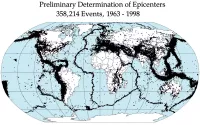
An earthquake is the shaking of the Earth's surface caused...
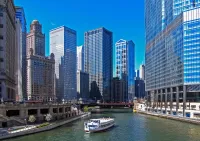
Chicago is the most populous city in Illinois and the...
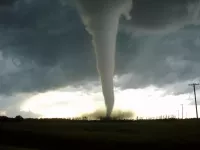
A tornado is a rotating column of air connecting the...
Canada is a North American country the second largest in...

The horse scientifically known as Equus ferus caballus is a...
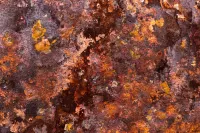
Rust is a reddish-brown iron oxide formed by the reaction...
Trending
7 months ago US Considers Revoking Visas for Chinese Students, Sparking Anxiety and Anger.
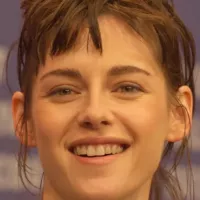
27 days ago Kristen Stewart's Bold Fashion Choice and Maverick Award Acceptance Speech Spark Interest.

1 month ago Tom Hardy's Spy Thriller overtaken by 'Now You See Me' at Box Office.

1 month ago Gable Steveson scores another knockout, continuing dominance in MMA with rapid wins.

5 months ago Naomi Osaka advances in Montreal as Pegula is upset by Sevastova.

5 months ago Robert Downey Jr.'s Cold Brew Debuts Exclusively at Texas Costcos: A Coffee Launch.
Popular

Stranger Things created by the Duffer Brothers is a popular...

XXXTentacion born Jahseh Dwayne Ricardo Onfroy was a controversial yet...
Turning Point USA TPUSA is an American nonprofit organization founded...

Candace Owens is an American conservative political commentator and author...
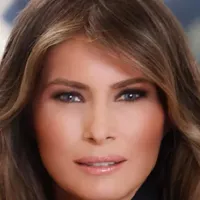
Melania Trump a Slovenian-American former model has served as First...

Bernie Sanders is a prominent American politician currently serving as...
